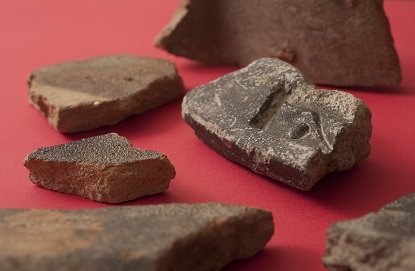The University of Reading, Hiroshima, and the Cold War
Release Date 09 February 2015

What was the impact of the bombing of Hiroshima on the Cold War? Did nuclear weapons cause the Cold War? Or was the nuclear arms race a product of Cold War tension? In the 70th anniversary year of the deployment of the world's first atomic bomb, the University of Reading held a special symposium on Monday 9 February which explored the legacy of ‘Hiroshima'.
Historians and scholars joined members of the public for the Hiroshima at 70 symposium. The event commemorated the 70th anniversary of the Hiroshima bombing and showcased new research on the complex relationship between nuclear weapons and nuclear deterrence.
The event also marked the beginning of a new phase in the remarkable partnership between the University of Reading (UoR) and Hiroshima University (HU). HU's buildings were incinerated and the majority of students and staff died. In the early 1950s, HU reached out to help support the rebuilding process, asking universities across the globe for books for a peace library and seeds to bring the charred campus back to life. UoR was one of the very few to respond, sending both books and seedlings.
Some 60 years later the University of Reading received a remarkable and moving gift from the University of Hiroshima; a collection of roof tiles¹ collected from the riverbed near the hypocentre of the blast. Later on HU sent a full set of manga comics, the Barefoot Gen series, depicting a child's eye view of the bomb.
During the Symposium Vice-Chancellor of the University, Sir David Bell read a letter sent by the Mayor of Hiroshima this week who asked attendees ‘in response to the desire of all hibakusha (survivors of the bomb) to continue to strive with us to eliminate the absolute evil of nuclear weapons and achieve a peaceful world'.
Sir David Bell said: "The event was a wonderful opportunity to celebrate our special relationship with the University of Hiroshima in Japan. To the best of our knowledge we were the only British university, alongside a small number of American universities, including Princeton, to answer the call of support for the peace library. The manga comics and the tiles were donated to the University both in thanks and in the hope that they would represent a world free of war and nuclear weapons. They are a clear message of peace rather than simply of commemoration."
The symposium was organised by Dr Mara Oliva and Dr Jacqui Turner from the University of Reading's Department of History, in partnership with the University Archivist Guy Baxter.
Dr Mara Oliva, lecturer in Modern American History, said: "The destruction of the Japanese cities of Hiroshima and Nagasaki by American atomic weapons in August 1945 began an arms race between the US and the Soviet Union that lasted until 1990. An entire generation grew up under the shadow of imminent catastrophe and there were widespread fears that humanity could not survive. A single reckless leader, or even a mistake or misunderstanding, could initiate the extinction of mankind. Our symposium began answering some important questions that still need further investigation."
Dr Oliva and colleagues at the University's Department of History have issued a Call for Contributions for a new book, Nuclear Weapons in the Cold War that will examine the issues surrounding arguably the most significant period in modern history.
ENDS
¹The tiles also came with a detailed radiation safety certificate and are now used by the Department of History for teaching and outreach.
Symposium speakers were
Dr Linda Risso, University of Reading, ‘The atomic bomb and public opinion: The limited credibility of NATO's deterrent strategy during the Cold War'
Dr Mara Oliva, University of Reading, ‘The failure of nuclear deterrence: Eisenhower and the Far East'
Professor Patrick Major, University of Reading, ‘Keep Calm and Carry On?: Britain, the Bomb and the BBC' Professor Major will also be introducing a new research project around the surprising discovery of ‘RSG6: Reading's Atomic Citadel' or The Reading War Room of RSG6 (Regional Seat of Government 6), a nuclear bunker situation right here on Whiteknights Campus.
